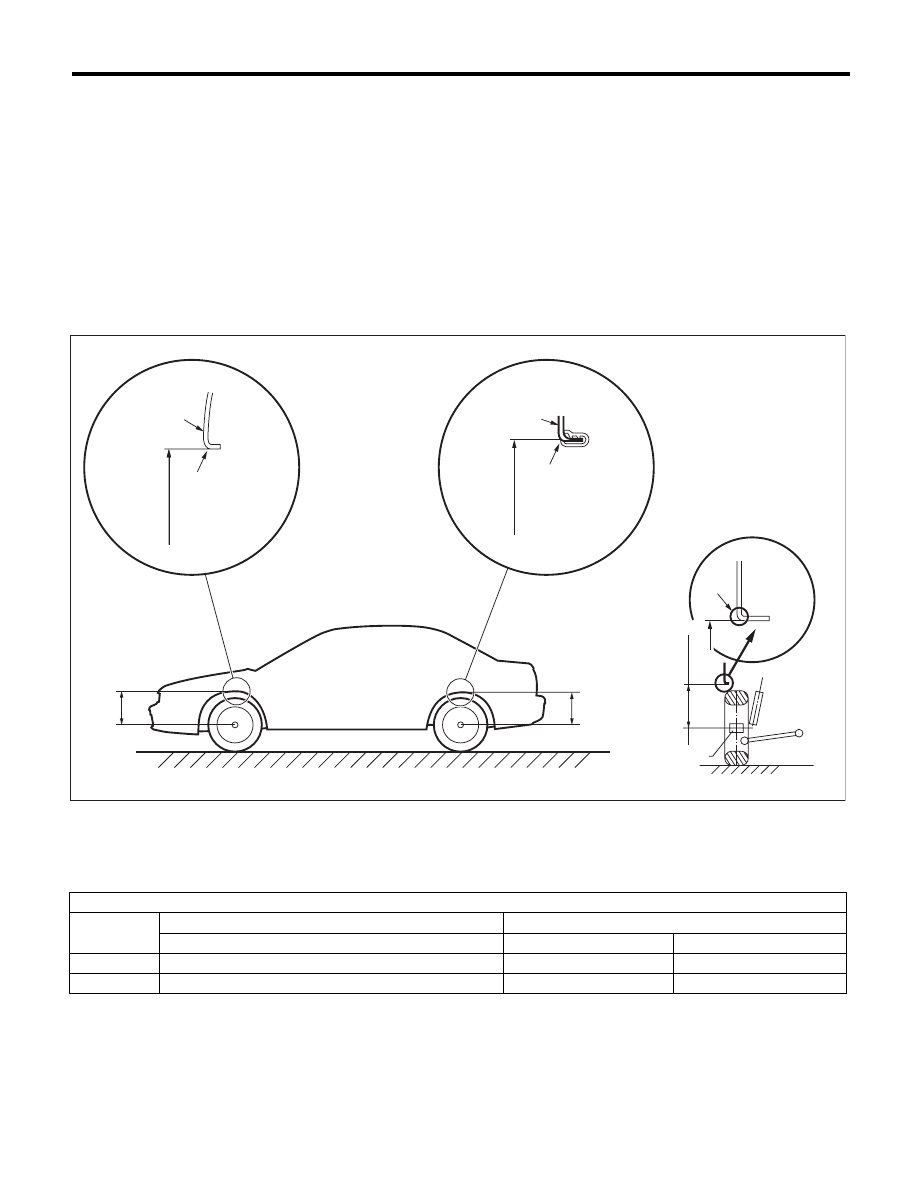Subaru Legacy IV (2008 year). Manual - part 840

FS-7
Wheel Alignment
FRONT SUSPENSION
1. WHEEL ARCH HEIGHT
1) Park the vehicle on a level surface.
2) Empty the vehicle so that it is at “curb weight”.
(Empty the luggage compartment, load the spare
tire, jack and service tools, and fill up the fuel tank.)
3) Set the steering wheel in a straight-ahead posi-
tion, and stabilize the suspensions by moving the
vehicle in a straight line for 5 m (16 ft) or more.
4) Suspend a thread from the wheel arch (point “A”
in the figure below) and affix at a position directly
above the center of wheel.
5) Measure the distance between the point “A” and
the center of wheel.
(1)
Wheel arch height
(4)
Front wheel arch height
(7)
Point of measurement
(2)
Front fender
(5)
Rear wheel arch height
(8)
End of spindle
(3)
Rear quarter
(6)
Flange bend line
Wheel arch height specification mm (in) (Tolerance:
+12 mm
–24 mm
(
+0.47 in
–0.94 in
))
Model
Sedan
Wagon
All models
Except for OUTBACK
OUTBACK
Front
381 (15.0)
381 (15.0)
439 (17.3)
Rear
365 (14.4)
375 (14.8)
438 (17.2)
FS-00125
A
A
A
(4)
(1)
(2)
(3)
(1)
(5)
(1)
(7)
(6)
(8)